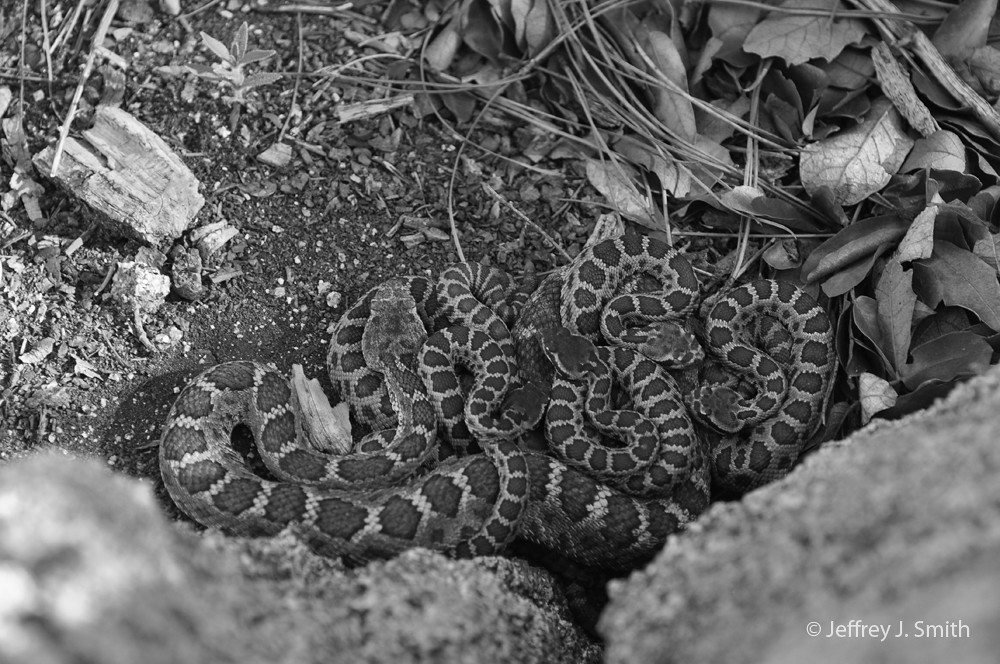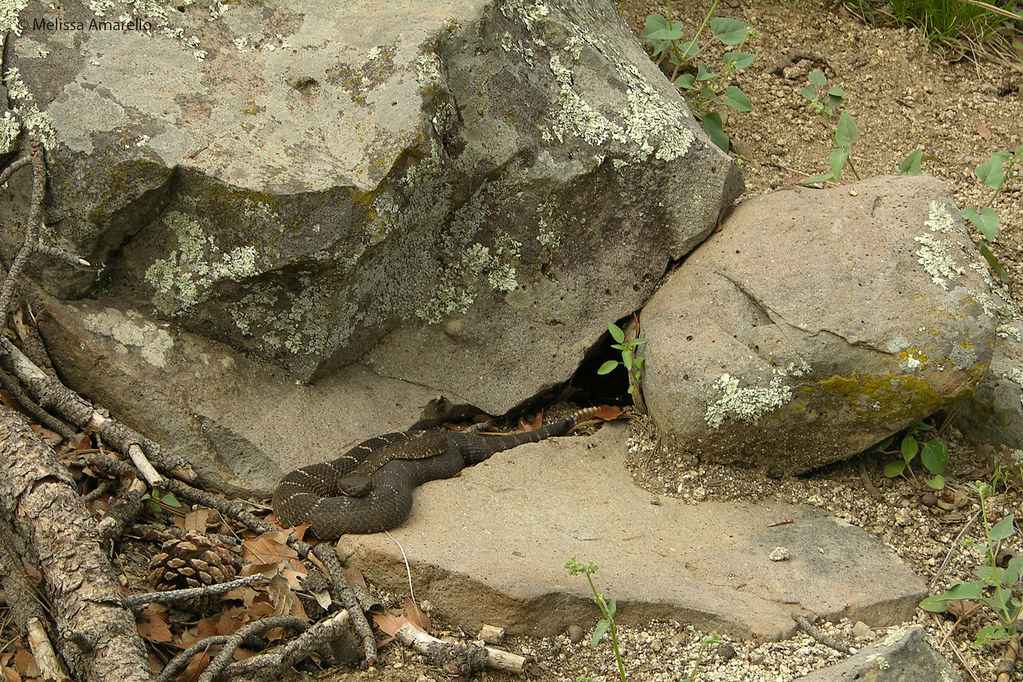"Fear of the dangers of anthropomorphism has caused ethologists to neglect many interesting phenomena, and it has become apparent that they could afford a little disciplined indulgence." (Hinde 1982)
"To endow animals with human emotions has long been a scientific taboo. But if we do not, we risk missing something fundamental, about both animals and us." (de Waal 1997)
Many scientists, in their efforts to be unbiased and avoid anthropomorphism (assigning human traits to non-human animals), engage in anthropodenial (de Waal 1997). Anthropodenial is the opposite of anthropomorphism: the refusal to acknowledge humanlike characteristics of non-humans animals, which is just a bias of another sort. As indicated by Hinde and de Waal above, scientists have missed some interesting animal behaviors because of anthropodenial. (For more on this topic, check out de Waal 1997.)
For example, numerous observations of rattlesnake families dating back more than a hundred years were dismissed by the godfather of rattlesnake biology, Laurence Klauber:

Their propinquity, such as it is, does not result from any maternal solicitude; rather it is only because the refuge sought by the mother is also used as a hiding place by the young. (Klauber 1956)
In 1992, Harry Greene, Peter May, David Hardy, Jolie Sciturro, and Terence Farrell published an article on viper parental care in a peer-reviewed book. In it, they present evidence that not only do families aggregate, but mother snakes actively defend their newborns.
Was there some technological advance at that time that finally revealed this behavior to scientists? No. But, it's difficult to see what you don't look for and these authors took the time to look. They also reviewed others' observations of parental care in vipers, demonstrating that this behavior is widespread and more than mere attendance.
When we began our study of social snake behavior in 2010, we were armed with cameras, binoculars, and field notebooks. With these simple tools we managed to document behavior that was once so easily dimissed. How? We were looking for it. And maybe more importantly, we largely left the snakes alone and let them tell their story.
This is Woody's story.

We first encountered Woody (adult female Arizona black rattlesnake, Crotalus cerberus) in a pile of rocks and a jumble of downed pines in May 2010, about 150 yards from any known dens. We visited this area a number of times through the summer, and found her almost every time, relaxing near some rocks or coiled among woody debris (for which she is named). Because of her camouflage, we would have to search around for her, which sometimes brought us in close proximity, but Woody was even tempered, never rattling or attempting escape.
Then one day in late August, everything changed. We discovered several newborn rattlesnakes basking near Woody's favored spot. As we approached to get a closer look, but no closer than we had approached Woody so many other times, we heard muffled rattling from under the rocks. As we started snapping photos of the little ones, Woody poked her head out of her shelter and then proceeded to crawl from her refugetoward us, still rattling, and glaring directly at us. Our once-placid Woody was now fearless and wanted us to know she would not tolerate our advance. Impressed with her maternal instincts and not wanting to distress her or her young, we quickly backed off.

We were more careful in future visits to Woody's nest, but she remained a vigilant mother: rattling from within her shelter if we got too close, or assuming a defensive posture in between us and her kids (as shown in the photo above). The young caught on too, retreating into shelter if mom was upset.
Eventually the babies shed and the family split up, each trying to get a meal before it was time to enter their den for the winter. Since Woody's nest wasn't located close to a known den, we weren't sure when we would see her again. Was Woody's den located at or near her nest site? Would she show up at one of the dens we already monitored?

On the very first day we visited the dens in April 2011, we spotted Woody, basking in a popular spot with several other snakes, including some little ones that were born the previous summer. One of these juveniles turned out to be Woody's baby, Adam.

The photo on the left is Adam (newborn on left) and Woody (right), at her nest in August 2010. Woody's nest was farther away than most in 2010, but Adam found his way to their den (photo on right taken at den basking area in spring 2011). In 2011 we starting using timelapse cameras, which caught Woody and Adam as they basked together:
Although it is not unusual to see adult and juvenile rattlesnakes basking together, Woody's interest in Adam is striking. Does her maternal regard for her offspring's well-being extend beyond the nest? If her mothering is genetic and beneficial to Adam, then such care could evolve. We have seen similar behavior in another female, following a juvenile from the previous year's nest (see this post for another example of this behavior).
Many underestimate the wonders and complexity of the natural world, especially when it comes to snakes. The more we remain open to the possibilities of nature, the more we will be able to see. Even though some of their greatest admirers denied it, rattlesnakes can be caring mothers.
References
de Waal, F. B. M. 1997. Are we in anthropodenial? Discover 18:50-53.
Greene, H. W., P. May, D. L. Hardy Sr., J. M. Sciturro and T. Farrell. 2002. Parental behavior by vipers. Pp. 179-205 in G. W. Schuett, M. Hoggren, M. E. Douglas, and H. W. Greene, eds. Biology of the Vipers. Eagle Mountain Publishing, Eagle Mountain, Utah.
Hinde, R. A. 1982. Ethology: Its Nature and Relations with Other Sciences. Oxford University Press, New York, New York.
Klauber, L. M. 1997. Rattlesnakes: Their Habits, Life Histories, and Influence on Mankind. 2nd ed. University of California Press, Berkeley, California.
6 years ago










5 comments:
Fascinating stuff. Like the new look on the blog.
Thanks David! We enjoy your blog too.
Thanks David! We enjoy your blog as well.
Wonderful stuff here. I have enjoyed this blog. Rattlesnake social behavior is an interest of my own, and it is good to see the attention snake social behavior is now getting in science. Beautiful videos, too.
Thanks Daniel! We're working on getting our work out in the scientific literature too :-)
Post a Comment